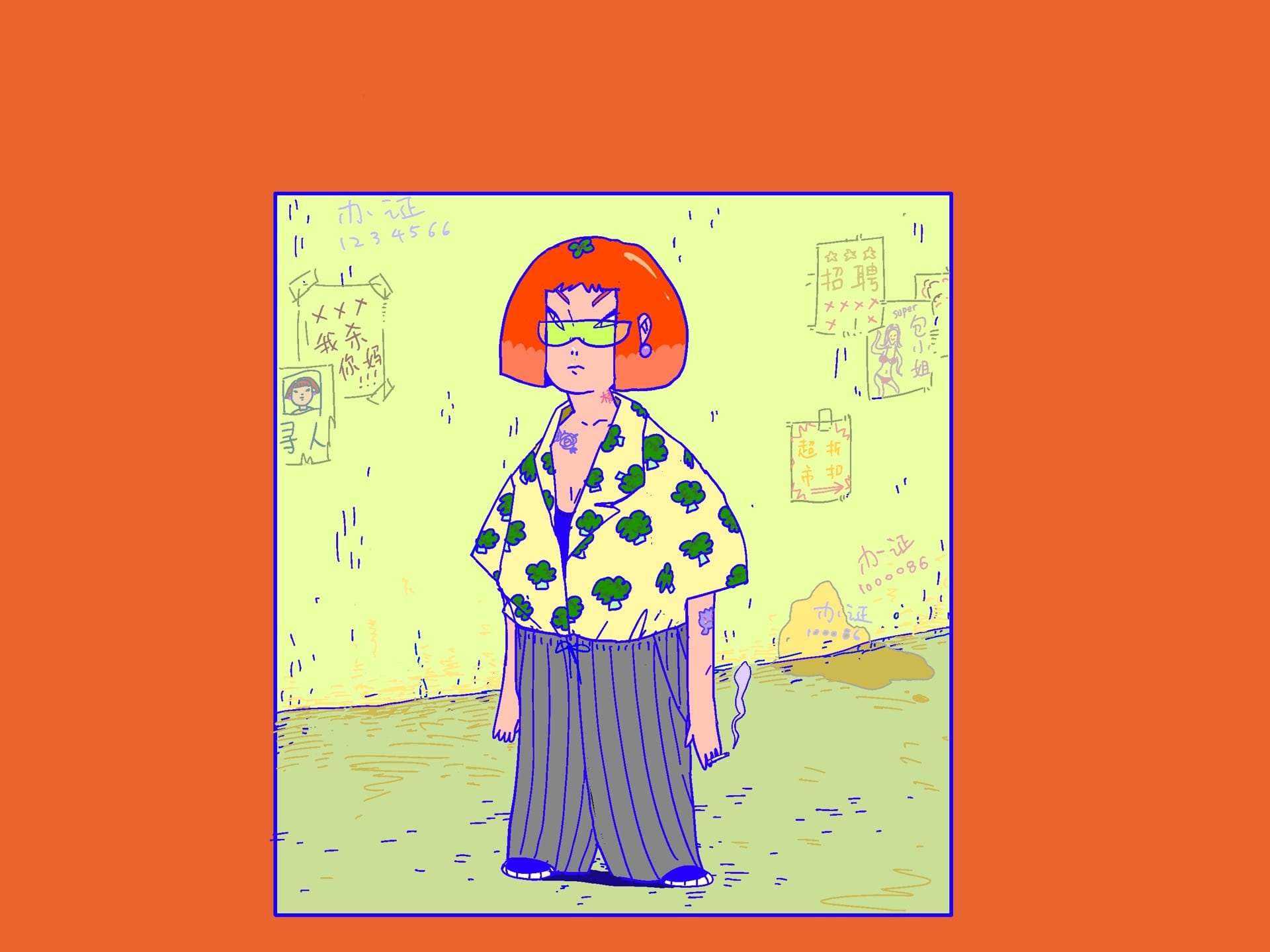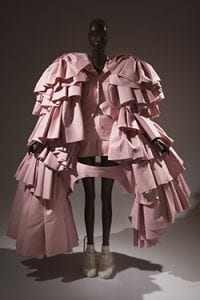Post images of one object from the FIT exhibition. How does you interpret the object’s use of color? Does your interpretation align with the designer’s intention (according to the exhibition and your own research)? How does your object participate in the social conversation about color and gender? Why do you think the curators included it in the exhibition? Include information from the lecture, website, and course readings to support your answer.
The exhibition held in FIT Museum of Fashion Pink: The History of a Punk, Pretty, Powerful Color collect about 80 ensembles from the 18th century to the present. Just like the name of the exhibition, the show translate the word and the color pink into different meanings by categorize different works from varies designers in a few spaces. When I walked to this piece by Comme des Garcons, I recognized the designer by its signature structural shape, but the unfamiliar use of color. This pink is not as eye-catching as any of the other shades of pink, it gives a sense of elegance and calmness. However the chaotic and structural shape makes a big contrary with the baby pink, it must be the designers purpose to make it like that to make a statement. Rei Explains the concept behind his collection that this collection is how Punk have seemed during the period of 18th-century revolutions exploding across Europe. This garment shows the power of pink and how people rebels against the social norms through the revolution of early times. When we think of the color pink, it draws back to 1900s when people use pink and blue to distinguish the newborn babies, at first the color pink was more of a “masculine” color which is for boys, and blue was considered to be soft and demure. But the gender coding system has change in twenty-first century into “pink-is-for-girls and blue-is-for-boys”. Susan B. Kaiser wrote in Fashion and Cultural Studies, the chapter about gendering fashion, “As is often the case with gender-coded appearance symbols, exceptions are made, but they often apply only in one direction. Girls can wear blue, but it is still largely considered to be anxiety producing for adults in the United States to see baby boys wearing pink, especially when they are very young( and not yet “fully formed”?) ” (122) People even now somehow still follows the “rules” of society that pink is a symbol of feminine and that is not for boys. However the 18th-century punk collection seems to rebel against such social and cultural discourse, by using the revolutionary punk to speak for rebels that don’t agree with such philosophy. This garment uses a suit as a base, that usually worn by man, with pink color and huge ruffles around the bodice looking like a explosion blooming. This piece is so necessary to be put in such exhibition, it not only reference the history of a revolution, but also a modern interpretation of a social discourse. It shows the power of pink and breaks the stupid rules and restrictions that people have been blindly putting for themselves.

